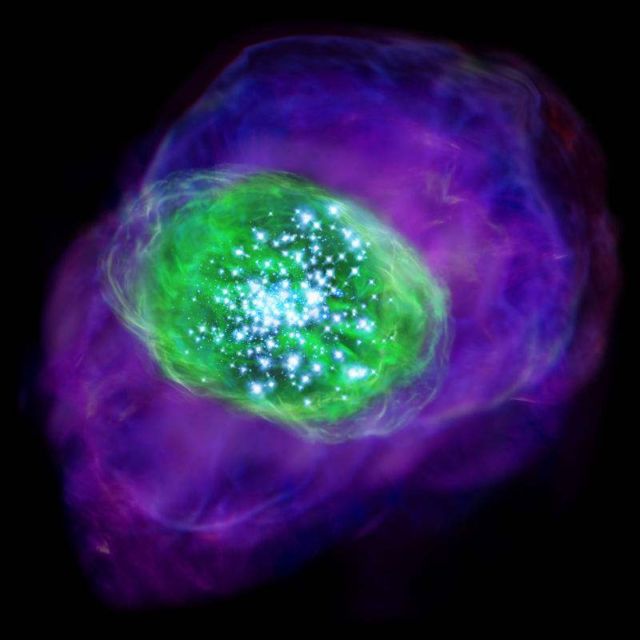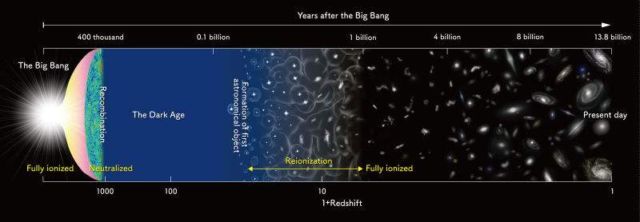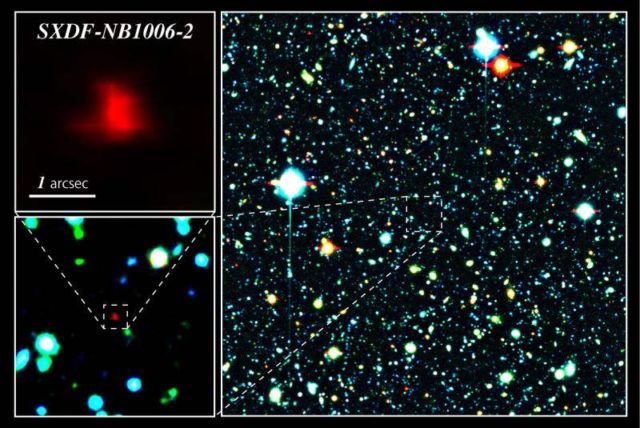Scientists discovered the furthest oxygen has ever been detected, in a galaxy 13.1 billion light years away.
A team of astronomers from Japan, Sweden, the United Kingdom and ESO have used the Atacama Large Millimeter/submillimeter Array (ALMA), to detect glowing oxygen in a distant galaxy seen just 700 million years after the Big Bang.
Above, many young bright stars are located in the galaxy and ionise the gas inside and around the galaxy. Green colour indicates the ionised oxygen detected by ALMA, whereas purple shows the distribution of ionised hydrogen detected by the Subaru Telescope. Credit: NAOJ
This is the most distant galaxy in which oxygen has ever been unambiguously detected, and it is most likely being ionised by powerful radiation from young giant stars. This galaxy could be an example of one type of source responsible for cosmic reionisation in the early history of the Universe.
The team was hoping to find out about the heavy chemical elements present in the galaxy, as they can tell us about the level of star formation, and hence provide clues about the period in the history of the Universe known as cosmic reionisation.
This diagram depicts the major milestones in the evolution of the Universe since the Big Bang, about 13.8 billion years ago. It is not to scale. The Universe was in a neutral state at 400 thousand years after the Big Bang and remained that way until light from the first generation of stars started to ionise the hydrogen. After several hundred million years, the gas in the Universe was completely ionised. Credit: NAOJ
Right panel: The red galaxy at the center of the image is the very distant galaxy, SXDF-NB1006-2. Left panels: Close-ups of the distant galaxy. Credit: NAOJ
Akio Inoue of Osaka Sangyo University, Japan, the lead author of the research paper, published in the journal Science, said:
“Seeking heavy elements in the early Universe is an essential approach to explore the star formation activity in that period. Studying heavy elements also gives us a hint to understand how the galaxies were formed and what caused the cosmic reionisation.”
source ESO








Leave A Comment